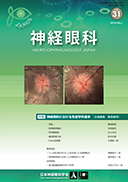Volume 31, Issue 1
Displaying 1-18 of 18 articles from this issue
- |<
- <
- 1
- >
- >|
Prefatory Note
-
2014 Volume 31 Issue 1 Pages 1
Published: March 25, 2014
Released on J-STAGE: July 11, 2014
Download PDF (98K)
Institution of Expert Advisor of the JANOS (tentative name)
-
2014 Volume 31 Issue 1 Pages 2
Published: March 25, 2014
Released on J-STAGE: July 11, 2014
Download PDF (116K)
Guest Articles
-
2014 Volume 31 Issue 1 Pages 3-4
Published: March 25, 2014
Released on J-STAGE: July 11, 2014
Download PDF (203K) -
2014 Volume 31 Issue 1 Pages 5-12
Published: March 25, 2014
Released on J-STAGE: July 11, 2014
Download PDF (10022K) -
2014 Volume 31 Issue 1 Pages 13-21
Published: March 25, 2014
Released on J-STAGE: July 11, 2014
Download PDF (8424K) -
2014 Volume 31 Issue 1 Pages 22-27
Published: March 25, 2014
Released on J-STAGE: July 11, 2014
Download PDF (2994K) -
2014 Volume 31 Issue 1 Pages 28-35
Published: March 25, 2014
Released on J-STAGE: July 11, 2014
Download PDF (7120K)
Trend & Development
-
2014 Volume 31 Issue 1 Pages 36-38
Published: March 25, 2014
Released on J-STAGE: July 11, 2014
Download PDF (846K)
Case Report
-
2014 Volume 31 Issue 1 Pages 39-44
Published: March 25, 2014
Released on J-STAGE: July 11, 2014
Download PDF (7016K) -
2014 Volume 31 Issue 1 Pages 45-51
Published: March 25, 2014
Released on J-STAGE: July 11, 2014
Download PDF (6432K)
Case Report
-
2014 Volume 31 Issue 1 Pages 52-56
Published: March 25, 2014
Released on J-STAGE: July 11, 2014
Download PDF (4191K)
Neuro-Ophthalmology Knowledge Assessment Program Test in 2013
-
2014 Volume 31 Issue 1 Pages 57-66
Published: March 25, 2014
Released on J-STAGE: July 11, 2014
Download PDF (2946K)
Contribution
-
2014 Volume 31 Issue 1 Pages 67-75
Published: March 25, 2014
Released on J-STAGE: July 11, 2014
Download PDF (4252K)
Report of the Latest Equipment
-
2014 Volume 31 Issue 1 Pages 76-80
Published: March 25, 2014
Released on J-STAGE: July 11, 2014
Download PDF (5537K)
Book Review
-
2014 Volume 31 Issue 1 Pages 81-82
Published: March 25, 2014
Released on J-STAGE: July 11, 2014
Download PDF (265K)
Literature Guide
-
2014 Volume 31 Issue 1 Pages 83-87
Published: March 25, 2014
Released on J-STAGE: July 11, 2014
Download PDF (333K)
Asian Section
-
2014 Volume 31 Issue 1 Pages 89-94
Published: March 25, 2014
Released on J-STAGE: July 11, 2014
Download PDF (94K) -
2014 Volume 31 Issue 1 Pages 95-97
Published: March 25, 2014
Released on J-STAGE: July 11, 2014
Download PDF (63K)
- |<
- <
- 1
- >
- >|
